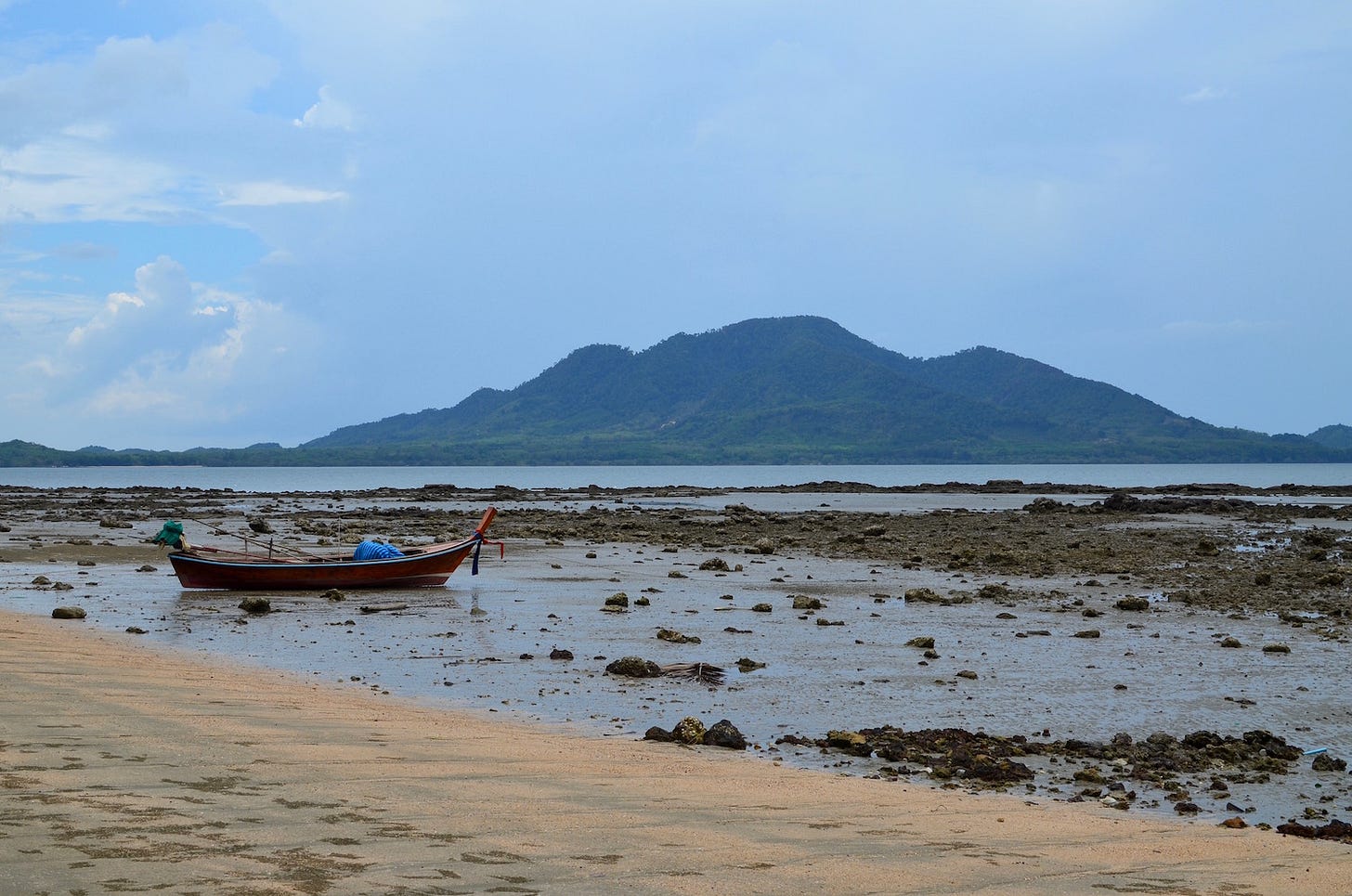T.I.C.D.: Krabi coast & offshore islands (Part II: Mu Ko Si Boya, Nuea Khlong & Khlong Thom)
A lesser-known island group and districts in Krabi province, condensed.
Welcome back to the Thai Island & Coastal Directory, a book-in-progress that promises to be the most complete guide to coastal Thailand ever written in English, covering more than 800 islands and all 24 coastal provinces. I’m releasing it piecemeal (four sections monthly) here at Thai Island Quest.
For info on how to use the T.I.C.D. and a working Table of Contents, paddle here. To view all previously published sections, see the welcome page.
T.I.C.D. ticker: So far, we’ve covered 474 islands and 166 notable mainland areas in 34 sections, including this one.
Resuming Krabi province…
Now we’re in the watery reaches of Nuea Khlong and Khlong Thom districts, where a confusion of isles sprawl within and near a 6-km-wide estuary that gathers multiple rivers into one. It is a wonderful area and while Ko Si Boya may be too offbeat for some, Ko Jum / Pu is a laid-back island that can serve as a gateway to both Ko Lanta and Ko Phi Phi. Also covered in this section is the second of Krabi province’s two Ko Klangs, and some picturesque mainland on the E coast of Ao Lanta.
Mu Ko Si Boya
If Mu Ko Phi Phi were the extroverted alpha of Krabi province’s five island chains, then Mu Ko Si Boya would be the standoffish introvert. Settled by devout Thai Muslims and the subject of its own subdistrict, this group of 19 isles is best known for its largest island: Ko Jum / Pu. It is the only Thai island for which I always use both of its common names, unless specifically discussing the areas that fall under each name. Lest you forget, the name is Ko Pu in the N of the island, and Ko Jum down S.
A mellow atmosphere is mostly what draws me to Ko Jum / Pu, whose beaches are fine for long walks but do not approach my ‘brilliant’ category. Even so, Jum / Pu is one of my personal favorites; I love the natural scenery and old-school backpacker vibe among visitors who tend to be careful to not disrupt the local Muslim ways of life. The same goes for Ko Si Boya, an ultra-quiet island with a small community of beach-house owners joining the villages, cows and rubber groves.
Ko Pu has a bit of trekking for those who are keen to summit Khao Ko Pu, a 400-m small mountain (or big hill). It is clearly visible from places like Ko Phi Phi and Railay, helping boaters to keep their bearings in the area.
And do be careful if steering a boat in these parts — a herd of some 10 to 20 endangered dugongs that feed on seagrass in the vicinity of Mu Ko Si Boya and the neighboring Phela River estuary are occasionally found dead with boat-inflicted wounds. One local dugong that melted hearts was Mariam, just a young calf when she was found ailing and alone after ingesting sea rubbish in 2019. Despite the best efforts of marine scientists, Mariam died in a well-publicized tragedy that prompted many people in Thailand to cut down on single-use plastics.
Islands and coastal ares below are arranged roughly from N to S.




